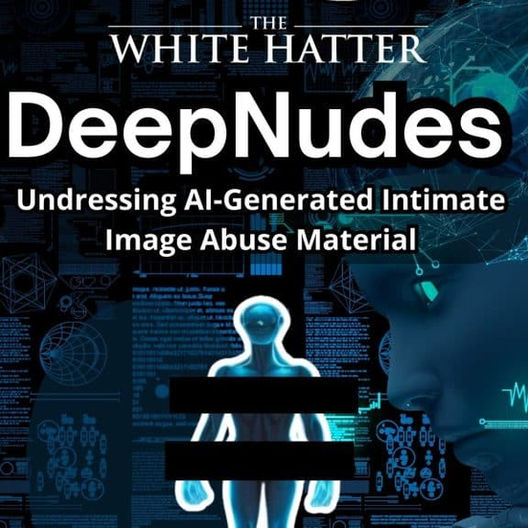Consent Isn’t Just About “Yes” or “No” Anymore
- TWH
- Jul 4
- 7 min read

When we talk about consent, the default conversation still often revolves around a simple legal binary, did they say yes or no? While this legal framing is important for upholding accountability, it barely scratches the surface of what consent actually looks and feels like for youth, especially in today's “onlife” world, where physical, emotional, and digital boundaries constantly overlap.
Today’s teens are not just navigating in-person relationships, they are developing, expressing, and negotiating boundaries through screens, apps, texts, emojis, and social media platforms. In this complex ecosystem, conversations about consent are being challenged, and redefined, not just by peers, but by cultural narratives, platform algorithms, online pornography, influencers, and persistent power dynamics tied to gender, race, identity, and visibility.
For teens growing up online, consent is no longer a one-time checkpoint, it’s a conversation. It’s about context, clarity, and comfort, not just compliance.
For many teens today, the idea that consent is a one-time event, a simple “yes” that applies indefinitely, is being actively challenged through education. Whether they're sexting, exploring romantic relationships, or even just sharing casual selfies with friends, young people are increasingly aware that consent must be revisited, reaffirmed, and respected throughout an interaction be it online or offline. Just because someone said “yes” to sharing a photo or engaging in a certain kind of communication once, does not mean that permission extends indefinitely. Digital consent, like in-person consent, can be revoked at any time, and teens are being taught that respecting boundaries means listening when someone changes their mind. This shift in education represents a deeper understanding of autonomy and agency, even in the fast-moving pace of digital interactions.
In the onlife world, consent is not just limited to physical intimacy or explicit content, it also extends to the ways teens engage with each other’s digital identities. Teens today are grappling with complex, often unspoken questions such as, “Is it okay to repost a friend’s photo if they didn’t explicitly say no?’ or “Does liking a swimsuit picture imply something romantic or sexual?” or “What about saving or forwarding images shared privately that aren’t intimate in nature?” These aren't just abstract or philosophical dilemmas, they’re practical, everyday decisions that shape how teens understand boundaries and respect. Digital behaviour such as liking, commenting, sharing, screenshotting, and reposting can all carry implications for how consent is interpreted and honoured. In this environment, even small interactions can feel loaded with meaning, and many youth are trying to navigate that space with growing intentionality and care.
More than ever, teens are being called upon to develop emotional literacy, an ability to understand, express, and navigate emotions, particularly when it comes to interpreting and communicating consent. In a world where miscommunications can quickly spiral, go viral, or result in real-life harm, many young people are learning to ask questions like, “Are you comfortable with this?” or “Can we talk about how this feels before we go further?”
These aren’t easy conversations, especially when the dominant culture often fails to model healthy, open communication. Yet, we are seeing more teens who recognize that consent isn’t just a checkbox, it needs to be a conversation. Many are showing remarkable insight in how they negotiate consent, often far beyond what adults assume they're capable of. Their ability to reflect on boundaries, read emotional cues, and adapt in real time highlights a level of emotional intelligence that deserves to be acknowledged, supported, and celebrated.
In their reality, the onlife world is a power structure, and teens know and understand this reality.
Whether it’s a request for nudes framed as “proof of love,” or the subtle pressure to look, act, or flirt a certain way to gain social capital, today’s teens are operating in an environment where consent is often shaped by who has the power in a conversation, not just what is being said.
A recent report released by Thorn reveals a notable shift in how young people understand value in the context of sexual exchanges. (1) Of the youth who reported participating in digital interactions where something of value was traded for sexual content or behaviour (15% of respondents), one-third said their “compensation” came in the form of social perks, such as invitations to parties or a boost in online followers. While social capital has always played a role in shaping relationships across various contexts, from friendships to professional networks to romantic encounters, this data suggests that digital social capital (like visibility, popularity, or follower counts) is becoming a powerful motivator for youth to engage in sexualized exchanges which directly relates to consent. These types of "payments" can be harder to identify as exploitative because they aren't tangible or monetary, which can make them feel more like opportunities than risks. Many young people may not recognize these scenarios as transactional or harmful.
In today’s onlife world, teens, especially girls and LGBTQ+ youth, are immersed in an online culture saturated with curated hyper-sexuality. Influencers across platforms often promote hyper-polished, provocative images that suggest sexual visibility equals empowerment, desirability, and success. For some teens, participating in this culture through sexting, suggestive photos, or flirty content can feel like a form of agency, an act of control over how they present themselves and engage with others. However, that sense of empowerment is not universal. Many teens feel trapped by unspoken social expectations or the fear of missing out (FOMO) if they don’t participate. They may worry about being seen as prudish, irrelevant, or invisible if they opt out of this performance-based digital economy. This creates a paradox, meaning that what may appear to adults as voluntary behaviour may, in fact, be driven by subtle social coercion.
Social media algorithms are not neutral. Platforms like TikTok, Instagram, and Snapchat are designed to reward content that is visually striking, emotionally charged, and often, sexually suggestive. These systems automatically push provocative, polished, and performance-driven content to the top of feeds, reinforcing a narrow standard of what gains attention and approval. As a result, teens quickly learn that flirtatious posts or revealing photos get more likes, more shares, and more social validation. This dynamic subtly encourages young users to shape their digital identity around what the algorithm favours, not necessarily what aligns with their personal values or comfort. Over time, this can lead to what might be called “algorithmic coercion”, a powerful form of pressure where teens begin to equate their self-worth with their ability to be seen, liked, or validated online through increasingly sexualized content. It’s not about informed, enthusiastic consent; it’s about being nudged, shaped, and incentivized by a system built to monetize attention.
Despite ongoing cultural progress, traditional gender roles continue to cast a long shadow over how teens interpret and navigate sexual communication, especially online. Boys are still often socialized to be initiators and pursuers, expected to take charge, be assertive, and "make the first move." Meanwhile, girls are commonly positioned as “gatekeepers of consent”, burdened with the responsibility to manage boundaries, decode mixed signals, and deflect unwanted attention, sometimes at the cost of their own comfort.
In digital spaces, where tone is difficult to read and non-verbal cues are missing, these gendered expectations can lead to confusion, miscommunication, and unhealthy power dynamics. For example, a boy may interpret silence or hesitation as consent, while a girl may feel pressured to go along with something just to avoid conflict or social fallout. When consent is framed through outdated scripts of masculine pursuit and feminine restraint, the result is often a dynamic where mutual respect, clear communication, and authentic choice are undermined—especially in the ambiguous world of online interactions.
When young people feel they must perform a certain kind of sexuality to belong or be accepted, true consent becomes compromised. As Melissa Stobebel, VP of research and insight at Thorn stated:
“We need to talk with young people about how offers of things like online followers and likes might be used to manipulate and exploit them.”
This is especially true given that Thorn also found that:
“42% of minors who engage in transactional sexual exchanges online said their buyer was another teen, including a peer”
When young people exchange sexual content with peers in return for things they desire, such as money, popularity, or other benefits, it can blur the boundaries between consent, personal choice, and exploitative influence.
Despite these challenges, many teens are actively working and adapting to build healthier understandings of consent, ones that are more inclusive, nuanced, and emotionally intelligent than those of past generations. They’re learning to:
Use clear language and set digital boundaries (e.g., “Please don’t screenshot,” “Ask before reposting that”).
Using the tech itself. As an example send a picture of a blank wall or ceiling often mean “not interested”
Normalize check-ins before and during intimate interactions, both online and offline.
Push back against peer pressure, performative sexuality, and algorithmic norms.
Recognize and call out toxic or manipulative behaviours masked as love or flirtation.
Question rigid gender expectations that limit emotional expression or vulnerability.
Rather than portraying them as passive recipients of harm, it’s time we recognize many teens as active agents of change, often doing the hard work of renegotiating consent culture in today’s onlife world where adults have fallen short.
Consent today is about more than permission, it’s about power, presence, and participation. Teens aren’t confused, they’re confronting a cultural landscape that often fails to support their rights to bodily autonomy and digital dignity. They’re building a new framework, one post, one conversation, one peer interaction at a time.
Let’s meet them there, not with fear, shame, or outdated scripts, but with curiosity, compassion, and the willingness to grow alongside them.
Some questions we suggest to have with your youth or teen about consent to spark the discussion:
Do you feel comfortable saying no in digital conversations?
What does respectful flirting look like online?
Has anyone ever shared something about you without permission?
How do you decide whether or not to send a photo or message?
What would you do if someone crossed your boundary digitally?
Digital Food For Thought
The White Hatter
Facts Not Fear, Facts Not Emotions, Enlighten Not Frightened, Know Tech Not No Tech
References:














